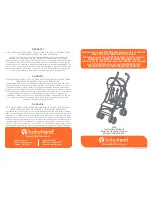
BioMax2 / KBio2-Online
Installation and Programming Manual
Page
16 of 91
5. Operation
Thanks to its IP connectivity,
BioMax2
and
KBio2-Online
electronics make it possible to
install a network of biometric sensors or different types of card readers, accompanied by
the corresponding actuators or user interfaces. All the peripherals are Host-managed,
except for the biometric search engine, which may optionally be located in the FIM it-
self
1
.
Normal operations consist of sending the events that occur to the Host. Normally, these
will be linked to a user ID. The user can simply put his or her finger on the biometric
sensor or start the identification by presenting the card or pressing any key. From hereon,
the Host will launch the identification and save its result. Once the identity of the person
is known, it will be possible to act on an access relay, display a personalised message on
screen or even ask for a code using the keycard.
An aspect that deserves special attention is the possibility to connect a choice of RS-232
peripheral devices to
BioMax2
, as indicated in
.
5.1. Connection of a FIM module
The most usual implementation of
BioMax2
is
BioMax2-FP
, which features a FIM
module for biometric identification. The same statement applies to
KBio2-Online
. In
both cases, several types of use are allowed:
• Host-based template database:
-
1-to-N identification (1:N):
the user places his or her finger on top of the
biometric sensor. An optical barrier activation event occurs, after which the
Host orders the capture of the user's fingerprint. The host will compare the
scanned template with all the fingerprints in its database (in the order of 25,000
users).
-
1-to-1 Identification (1:1):
the user is identified using the card or by entering a
code. The Host receives the identification code and retrieves the corresponding
identification code from its database. This fingerprint is sent to the biometric
sensor, after which the sensor itself scans the user's finger to check its identify
with a 1 to 1 comparison (“Instant Matching”).
• FIM-based template database:
-
1-to-N identification (1:N):
the user places his or her finger on top of the
biometric sensor. An optical barrier activation event occurs, after which the
Host orders the capture and immediate identification of the user's fingerprint.
-
1-to-1 Identification (1:1):
the user is identified using the card or by entering a
code. The Host receives the identification code and triggers a comparison
between a template in the FIM module and the scanned fingerprint.
1. Offline behaviour is allowed when the search engine is located in the FIM. Typically, the
offline mode is enhanced by means of the BiomaxPlus-DB auxiliary board. See
















































